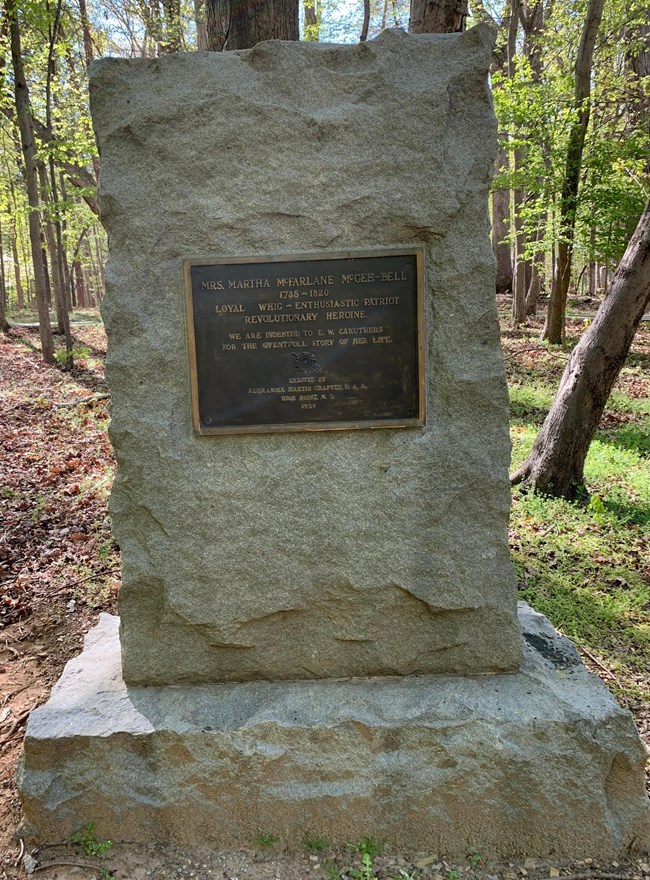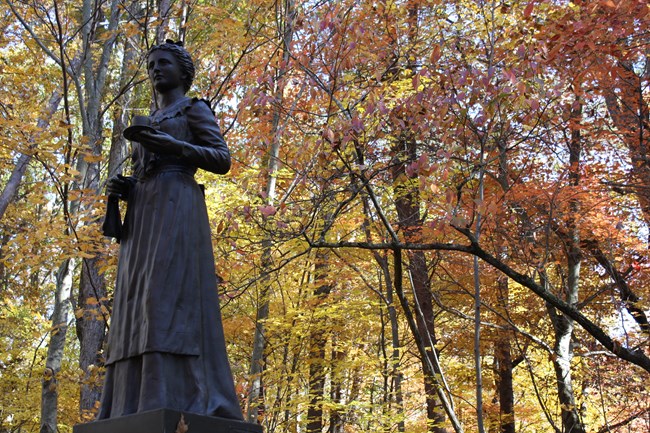Women in War
Memorialized Women at Guilford Courthouse
NPS Photo Martha McFarlane McGee-BellHer monument says “Loyal Whig, Enthusiastic Patriot, Revolutionary Heroine.” We wanted to give you more insight to her story than the monument can. Martha was married twice, inheriting a grist mill from her first husband Colonel John McGee, an officer of the British Army. Her second husband was William Bell, and they shared an ardent passion for patriotism. He also owned a grist mill in the Deep River Community, where Martha would interact with Lord Cornwallis days after the Battle of Guilford Courthouse. Cornwallis informed Martha that her home would become his headquarters and the men would use the mill. Her husband was with Greene’s camp at the time, to avoid falling into the enemy’s hands. Martha inquired to Cornwallis his intentions for potential property destruction, but he assured her no harm would befall the property. Martha replied, according to historian Eli Caruthers, “Had your lordship said that you intended to burn our mill, I had intended to save you the trouble by burning it myself before you derived much benefit from it.” Because Cornwallis pledged no harm, Martha did not destroy the property. The backcountry has dissolved into a civil war between patriots and loyalists, and Martha Bell had often interacted with the notorious Loyalist David Fanning who had threatened her family on more than one occasion. Martha served her local community as a nurse and midwife, and accompanied friend Mary Dougan to the coast to see her captured husband, Col. Dougan. 
NPS Photo Kerenhappuch Norman TurnerKerenhappuch Turner was memorialized as a heroine of the Revolution for having ridden a long distance to care for her son who was wounded in the battle.Kerenhappuch lived in Halifax County, Virginia and her son James Turner Jr. was a captain in the Virginia militia. James recovered from wounds with the care of his mother and went on to serve in South Carolina. Kerenhappuch is depicted holding a cup of tea with a towel over her forearm. |
Last updated: February 27, 2024
